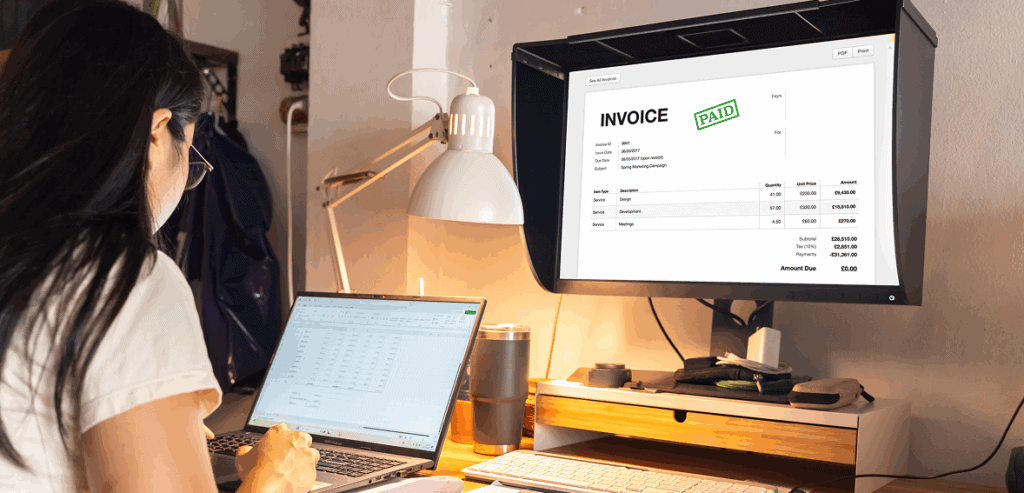
By Geraldine Burns November 10, 2025
Restaurant service has never been more dynamic. Between large groups, varied payment methods, and evolving tipping expectations, servers juggle multiple tasks at once—all while ensuring smooth, fast service. Today’s dining experience relies heavily on the restaurant point of sale system to manage these complexities without compromising guest satisfaction or table turnover. Modern POS for restaurants has evolved from simple cash registers into smart, cloud-connected systems that can split checks, add auto-gratuity, and apply service fees instantly. These features are no longer optional—they’re essential for efficiency, fairness, and profitability.
Guests now expect flexible payment options. Whether it’s splitting a bill five ways, paying by mobile wallet, or dividing items by seat, speed matters. An advanced restaurant POS system like Bread’s keeps this process intuitive, enabling servers to handle multiple requests in seconds. By eliminating manual math and human error, it empowers staff to stay focused on what truly matters: service quality and guest experience.
The Need for Smarter Check Management
Group dining is both a revenue booster and a logistical challenge. Multiple guests, customized orders, and staggered payments can slow the checkout process. Traditionally, servers had to print several versions of the bill or perform mental calculations to split totals. With an integrated point of sale, this once time-consuming task happens automatically. Each seat can be assigned its own order, and checks can be divided by amount, percentage, or item—all within seconds.
The impact goes beyond convenience. Efficient check handling ensures tables turn faster, guests leave happier, and staff work with less stress. Integrated restaurant payments streamline the final step by allowing contactless or mobile transactions directly from the restaurant POS system. In a busy setting, every minute counts, and automation here saves hours over the course of a shift.
Auto-Gratuity and Transparent Tipping
As tipping norms evolve, restaurants are finding ways to standardize and simplify how gratuities are added. Auto-gratuity—often applied to large parties—ensures fairness and consistency for staff while maintaining transparency for customers. A well-configured restaurant point of sale can calculate and apply this automatically based on preset rules, such as party size or type of service.
This feature is invaluable for restaurants with private dining or banquet setups, where large groups often require multiple servers. Instead of manually adding a percentage to each bill, the POS for restaurants handles it uniformly, preventing disputes or forgotten gratuities. It also helps ensure equitable pay distribution among team members when integrated with payroll or tip-out modules.
From the guest’s perspective, auto-gratuity creates clarity. The point of sale displays detailed breakdowns, so customers see exactly how charges are applied. Combined with digital receipts and secure restaurant payments, it establishes transparency that builds trust and prevents confusion.
Managing Service Fees Without Friction

Beyond gratuity, many restaurants now incorporate service fees to cover rising operational costs, staff benefits, or card processing expenses. The challenge lies in applying these fees without disrupting guest flow or appearing inconsistent. With a modern restaurant POS system, service fees are programmed once and applied automatically to qualifying transactions. This ensures accuracy and removes the burden of manual entry from servers.
When paired with integrated restaurant payments, these adjustments are reflected in real time across receipts, reports, and accounting. Managers can configure percentage-based or fixed fees for different order types—dine-in, delivery, or catering—ensuring that every scenario is handled fairly. Guests, too, appreciate the clarity when they can view these fees upfront on digital displays or handheld devices. Transparency reduces disputes, speeds up checkout, and enhances customer confidence in the brand.
Keeping Turns Fast and Service Seamless
Speed remains the heart of restaurant operations. The goal of any advanced POS for restaurants isn’t just accuracy but agility. When check splitting, auto-gratuity, and service fee management occur within seconds, servers regain valuable time to focus on hospitality. Tables turn faster because guests aren’t waiting for multiple card runs or bill revisions.
With systems like Bread’s, all these processes are cloud-synced and mobile-ready. Staff can manage complex transactions from handheld devices right at the table, without walking back to a central terminal. That same data updates immediately on the kitchen display system, ensuring synchronization across front and back of house. The result is faster checkout, happier customers, and more consistent service during peak hours.
The Technology Behind the Efficiency

Behind every smooth transaction lies an intelligent architecture of data synchronization and automation. The restaurant point of sale communicates continuously between tableside devices, the kitchen, and payment processors. This ensures that no step in the transaction chain introduces delay. For managers, the same technology generates clean, itemized records for accounting, tip tracking, and labor compliance.
Integrated restaurant payments also play a key role in this efficiency. By embedding payment capabilities directly into the restaurant POS system, there’s no need for third-party terminals or manual reconciliation. Whether it’s credit, debit, or digital wallet, payments are processed securely in real time, reducing the chance of errors or chargebacks.
Such systems are designed for scale. A small café or a multi-unit chain can both use the same platform with custom configurations. The ability to adjust policies for gratuity, service fees, or tax categories per location gives operators flexibility while maintaining centralized control.
Building Transparency and Guest Trust

Guests today are more informed and value transparency. When every fee, tax, and gratuity is clearly displayed on a digital receipt, they’re less likely to question charges. This clarity builds confidence in the brand and reflects professionalism. A robust restaurant POS system ensures these details are automatically itemized and recorded, leaving no room for confusion.
Even complex requests—like splitting shared appetizers or drinks across multiple checks—can be done instantly. The POS for restaurants can associate each item with a seat number or customer name, keeping everything organized and traceable. With digital signatures and emailed receipts through integrated restaurant payments, the entire experience feels modern and frictionless.
Such precision strengthens customer loyalty. When guests feel their requests are handled swiftly and fairly, they’re more likely to return. Behind that positive experience is technology designed to make every transaction accurate and transparent.
Operational Insight for Management
For owners and managers, these features do more than simplify service—they provide actionable insight. Through real-time analytics within the point of sale, restaurants can monitor how often checks are split, track gratuity totals, and analyze peak transaction times. This visibility helps in scheduling, pricing, and staff incentives.
An integrated restaurant POS system like Bread’s aggregates this data into dashboards that reveal trends and highlight inefficiencies. Managers can identify which servers process the most group transactions or where service fees contribute most to revenue. These insights lead to smarter decisions and more predictable margins, all while maintaining a smooth guest experience.
Simplifying the Future of Dining
Efficiency, fairness, and transparency define the next generation of restaurant operations. Features like split checks, auto-gratuity, and service fees used to be cumbersome, but modern technology has made them instant and effortless. Cloud-based restaurant point of sale systems now deliver what once required multiple tools—a unified workflow from order to payment.
By combining these tools with integrated restaurant payments and a responsive POS for restaurants, operators can focus less on logistics and more on hospitality. The ability to handle complex payment requests without slowing turns transforms the dining experience into something fluid and enjoyable. For guests, it’s convenience. For staff, it’s simplicity. For owners, it’s efficiency that directly impacts the bottom line.
The modern restaurant thrives on connection—between people, systems, and data. With the right technology in place, every check becomes a moment of seamless service, every transaction a step toward stronger relationships and smarter operations.